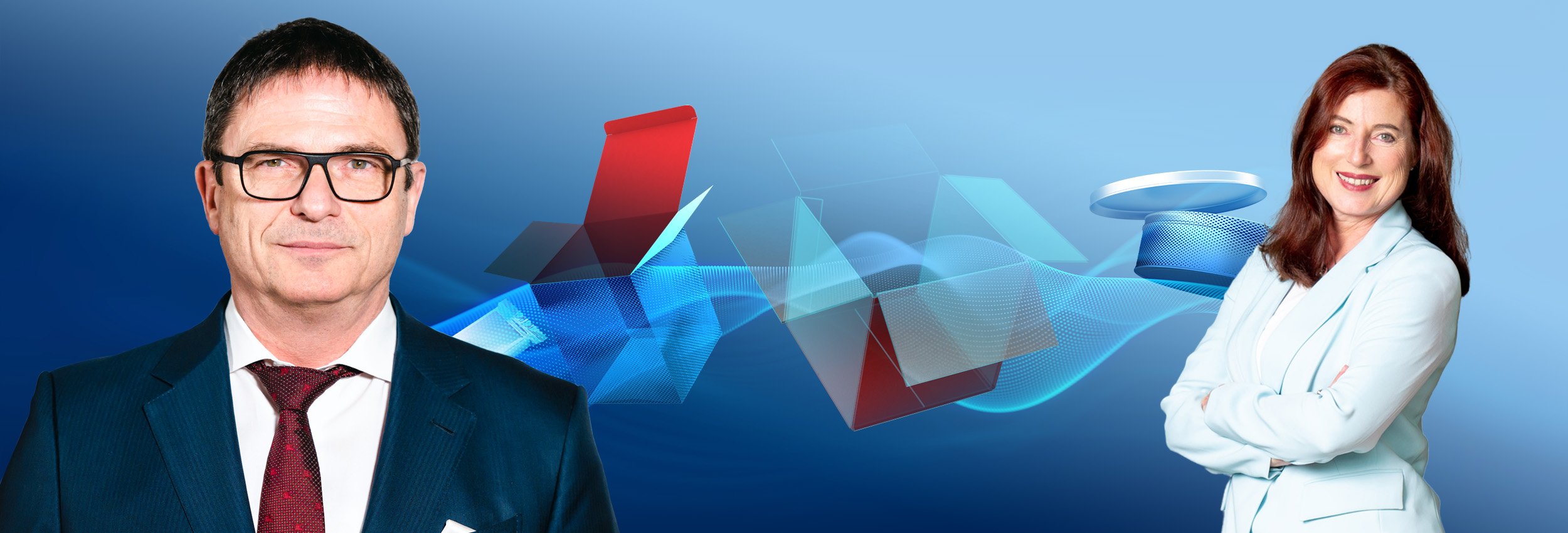
A Sneak Peek Ahead of drupa: Digital Printing
An interview with Christoph Müller, CEO of Koenig & Bauer Digital & Webfed and member of the management board of Koenig & Bauer, sheds light on the latest developments and trends in the field of digital printing. Dagmar Ringel, Director of Corporate Communications, wanted to learn more about the demands and challenges that characterise this market segment, and the innovations that have already proved successful.
Mr Müller, digital printing is one of the industry’s innovation drivers. What is it that makes digital printing so appealing in your opinion?
Christoph Müller: For me, digital printing is the enabler for digitalisation. All brands and manufacturers want to communicate directly with their customers and respond to daily changes with changes in packaging. Every single printed product can be unique. It is this special property that allows digital printing to answer key demands of our customers. Everywhere, the trend is heading in the direction of shorter runs and individualisation. The number of product variants is increasing, especially in the area of what are called fast-moving consumer goods. At the same time, brand owners and retailers face the challenge of having to meet increasingly strict requirements in terms of product traceability and product safety. Digital printing enables further optimisation or even a complete redefinition of many aspects of the production process. The keyword is: change in the value chain. The reduced storage quantities and shorter turnaround times that follow from that, the lower level of advance funding required, and the ultimately more efficient production processes help our customers to secure longer-term profitability. Accordingly, high-performance digital printing systems from Koenig & Bauer can entertain even long print runs, which no-one ever considered a domain for digital printing in the past.
There have already been many discussions on whether digital printing is the future of the print industry. Where do we stand today, and how can conventional and digital presses benefit from each other?
Christoph Müller: In the future, digital printing will exist in different areas as a complementary and equal technology to conventional production processes for a long time. It’s not really an either-or decision: given the high quality, repeat accuracy and performance of Koenig & Bauer’s digital printing systems, our customers can pursue hybrid production strategies. This means different business models for the same or similar products. Koenig & Bauer is the only manufacturer on the market that enables its customers to obtain high-performance conventional technologies and cutting-edge digital printing systems from a single supplier.
The digital flagship press from Koenig & Bauer is the RotaJET. What makes this press so unique?
Christoph Müller: The RotaJET is the flagship for industrial digital printing. Thanks to its modular design, the press can be configured very flexibly and be adapted to all kinds of applications. Let me give a few examples: with a web width of 138 cm and speeds of up to 270 m/min, the RotaJET is a perfect fit for high-volume book production. In the packaging segment, it can play out its strengths with web widths of up to 168 cm and the incorporation of flexo sleeve units. This hybrid approach means there are practically no restrictions for the use of spot colours, coating finishes and other product refinements. And in digital décor printing, which many consider the Champions League in terms of print quality and reproducibility, the RotaJET is an absolute game changer with web widths of 225 cm and speeds of up to 135 m/min – not just technologically, but above all with regard to quality. Compared to the analogue printing process process, makeready times are reduced to a minimum, and on-demand production becomes possible even for long, industrial-scale runs.
What can visitors to drupa look forward to in terms of digital printing?
Christoph Müller: The RotaJET was already the showpiece of the Koenig & Bauer Technology Days earlier in the year, and so we will present printing products from the key market segments of the machine: décor printing, folding cartons, liquid packaging and book production.
Among other things, we present an AI-generated laminate – with a repeat-free overall length of 24 metres. Digitally printed drinks packaging in seven different designs will be available to illustrate flexible printing with flying image changes. For the folding cartons segment, we are bringing along some interesting products created by the Digital Unit of Koenig & Bauer in collaboration with our Banknote Solutions business unit. And the Questec Sheeter from BW Papersystems will be handling commercial jobs printed with flying changes on the RotaJET in Würzburg.
To learn more about potential applications for the RotaJET and to check out further print samples, visit our stand A31 in Hall 16. We look forward to meeting you in person for a technical discussion.
